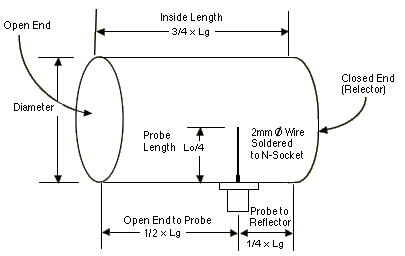Cantenna Wifi Calculator

(HONOURS) BENGALI (Three Year Full Time Programme) COURSE CONTENTS (Effective from the Academic Year 2011‐2012 onwards) DEPARTMENT OF MODERN INDIAN LANGUAGES AND LITERARY STUDIES. Pretoria — The U.S. Embassy is proud to announce that 46 South Africans have been invited to participate in the first ever Young African Leadership Initiative (YALI) Washington Fellowship. These outstanding young South African leaders will travel to the U.S. This June with over 450 other young African leaders for a six week program at. 
UPDATE* After more trial and error, I realize that my original Pringles Cantenna was built too far back into the can. This newer calculator suggests a distance of 2.5 inches. Good thing Pringles. About Cantenna Calculator The resource is currently listed in dxzone.com in 2 categories. The main category is 2.4 GHz Wifi antennas that is about 2.4 GHz Wifi antennas. This link is listed in our web site directory since Wednesday Sep 19 2012, and till today 'Cantenna Calculator' has been followed for a total of 3912 times. So far received 112.
Introduction The BiQuad antenna is fairly easy to build and provides reliable gain and it has very forgiving design. You can make quite a big margin of error in the construction and still get 10-11dBi gain. Hence here is the Double BiQuad Antenna and BiQuad Antenna calculators for handmade antenna based on average data. However I highly recommend to follow my instructions, which are based on computer antenna simulation software 4nec2, to maximize performance. Is listed currently available instructions, simulated with computer software, for handmade 13-14dBi Double BiQuad external antenna. Note: The dBi scale is logarithmic in base 10, where +3 dBi is a doubling in gain! An increase in gain of +1 dBi is equivalent to an increase of 26% and +2 dBi is equivalent to an increase of 60%.
This means that the increase in +1dBi is a big deal. Double BiQuad Antenna Calculator. ( Very important to choose proper cable! the longer the cable length, the more signal loss you'll have through the cable.
Long cable will defeat the purpose of the antenna. Read the guide for more info.) • Copper wire for the element. • Spacers in each end of the element to hold its position and spacing correct height between the radiator and the reflector. Spacers must be from any non-metallic material. Print2cad 2016 crack.
Plastic will do alright. N-Type (female) connector Single Sided Copper Clad Board Building the antenna I will not show you picture after the picture how to drill the hole in center of reflector. How to use ruler. How to do proper soldering. What kits to use and etc. There are plenty of tutorials for these steps:, or (Note: all calculations in links are for 2.4 GH z WiFi antenna.
Use calculator calculated data and measurements for your antenna.) (Note: Pictures below not to scale) Element bending. Does anybody know the so called 'LTE800-Dual-Quad-Antenna'? This kind of antenna looks similar to a BiQuad but works like a Quad-Antenna only and allows MIMO and it is polarized H+V. You can see it here: (scroll down) The two halfs of the antenna are connected in the middle like a 'U'. Its covered in the shown picture. I´m very much interested in how to calculate such an antenna bcoz that´s an easy way to use it as a feed-point of a satellite dish.
If you can help please mail to: sybille.koch[at]gmx.at Thank you!
Some basics: In antenna terminology, this is an “open-ended waveguide”. Practically speaking that just means a hollow metal tub e excited in a way that radiates electromagnetic e nergy. You pick the diameter of the tube accordin g to the frequency band you want to work in. The length and diameter of the t ube determine t he antenna’s radiation pattern.

You excite the cantenna with a coaxial cable an d it will transmit your signals – it’s as simple as that! Uses: As luck would have it, many can sized cylinders are good for the 2.4 GHz ISM band. This could be useful for connecting a laptop to the internet in a remote location or connecting to a free Wi-fi network from your home. Most 802.11 standards fall into this band: 802.11b and 802.11g use 2.4GHz. 802.11n can use both 2.4GHz and 5 GHz, but you can get away with only the 2.4GHz signal - it propagates better over long ranges anyway.